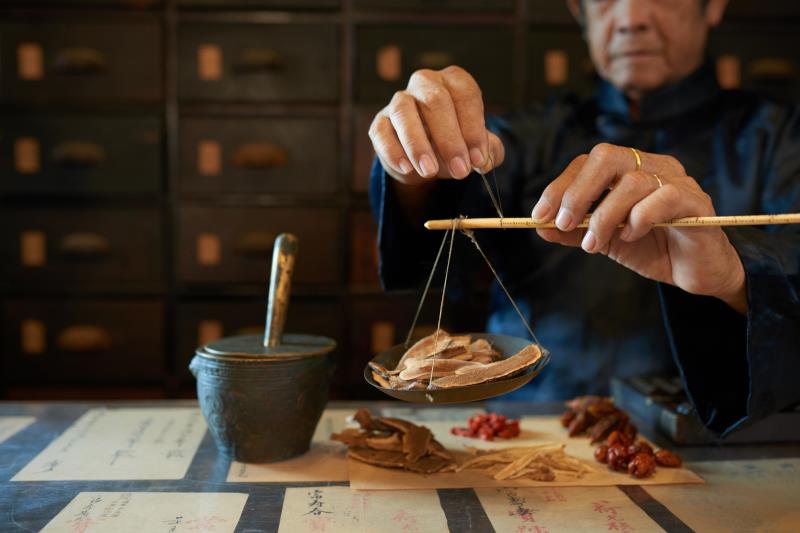
Comfort and perceived importance of discussing traditional Chinese medicine (TCM) use are the main factors that drive the discussion on TCM use between patients and their Western medicine (WM)-practising general practitioners (GPs), according to a Singapore study.
A total of 484 adult patients (mean age 54.1 years, 59.3 percent female) who used TCM and 334 WM-practising GPs answered separate cross-sectional questionnaires. Ingestible herbs, acupuncture, and Tui Na were the most commonly used TCM (82.0, 39.3, and 32.2 percent, respectively) and 14.3 percent of patients used TCM daily. TCM was most frequently used for non-specific aches (47.9 percent), as dietary supplements (43.6 percent), and for acute conditions (42.8 percent). Seventy-four percent of patients obtained these treatments from licensed TCM practitioners.
Almost 35 percent of patients surveyed were unaware of the potential side effects of TCM, while 66.2 percent had awareness on possible TCM-WM interactions.
About 66 percent of patients did not initiate discussion on TCM use with their GPs, despite 45 percent believing TCM use should be discussed. Almost 79 percent of patients reported that their GPs did not initiate discussion on TCM use, with only 22.6 percent of patients feeling that their GPs were open to the discussion. Almost 46 percent of patients thought their GPs’ knowledge on TCM was insufficient. [J Integr Med 2019;doi:10.1016/j.joim.2019.09.001]
Thirty-five percent of GPs acknowledged never discussing TCM use with their patients. Despite 35.3 percent of GPs recognizing the need for the discussion, 60.5 percent cited insufficient time as the reason for non-discussion.
Comfort in discussing TCM use was a factor driving discussion initiation among both patients (odds ratio [OR], 1.64; p<0.001) and GPs (OR, 1.94; p=0.001), as was belief in the importance of the discussion (OR, 1.38; p=0.02 and OR, 2.10; p<0.001, respectively).
Patients were more likely to discuss TCM use if there was time available during their GP consultation (OR, 2.12; p<0.001) and if they were aware of potential TCM side effects (OR, 1.31; p=0.03), and less likely to initiate the discussion if they were predominantly WM users (OR, 0.77; p=0.04). Among GPs, knowledge of TCM indications influenced their decision to initiate the discussion (OR, 2.18; p<0.001).
“It is likely that GPs who are better informed of the indications of TCM will look out for possible TCM drugs that patients could use for their medical conditions, thereby increasing the likelihood of GPs initiating TCM discussion … [Additionally, the] lack of personal experience in using TCM could lead to reduced confidence in broaching the subject with their patients,” highlighted the researchers.
Potential TCM-WM interactions (58.1 percent), patient compliance with WM (58.1 percent), and potential side effects of TCM (55.1 percent) were the primary factors among GPs to discuss TCM use, while initiation of the discussion by GPs (74 percent), GPs receptiveness towards TCM (64.9 percent), and potential TCM-WM interactions (60.3 percent) were the main factors influencing TCM discussion among patients. Just 10.1 percent of patients thought that discussion on TCM affected their WM regimen, in contrast to 32.6 percent of GPs who said the discussion affected their treatment plan.
Previous research has indicated that complementary medicine users in Singapore frequently do not discuss their use of said medication with their WM-practising doctors. [Complement Ther Med 2005;13:16-24; Ann Acad Med Singapore 2014;43:74-78]
“[T]his study has elucidated the main barriers holding back each party from taking the initiative to discuss TCM use,” said the researchers. “Overcoming these barriers could help avoid potential adverse events resulting from inappropriate simultaneous use of WM and TCM.”
“[The factors influencing TCM discussion] provide insights into the psyche of patients and doctors, allowing for appropriate interventions to be implemented to improve the rate of discussion of TCM use in the WM consultation.” These interventions include raising awareness among GPs and patients on TCM and its potential interactions with WM and encouraging patient involvement in treatment plans, they said.